Direct Numerical Simulations
Dr Hui Xu: Drag reduction by delaying laminar-turbulent transition
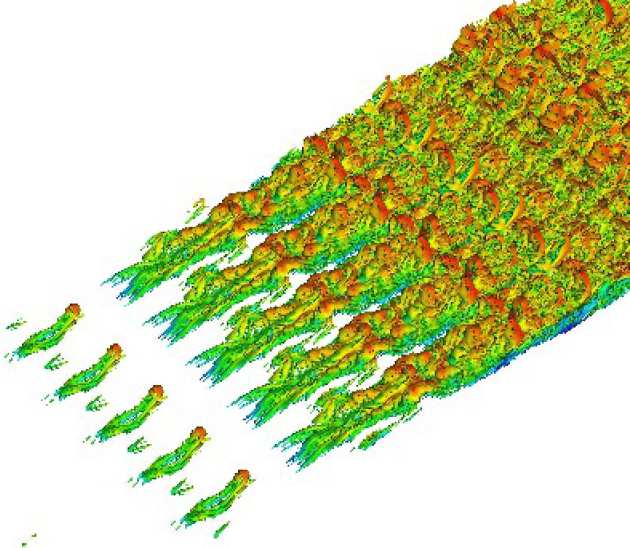 Dr. Hui Xu focuses on stability/instability analysis of the boundary layer with varying curvature. His particular interest is focused on various strategies of stabilising the boundary layer and delaying laminar-turbulent transition. One aspect of Hui’s research is to investigate the effect of a single/multiple forward facing smooth steps on the growth property of the Tollmien-Schlichting (T-S) waves in the boundary layer. He is also using high-precision spectral element method to investigate various stabilisation strategies, which are obtained by theoretical analysis.
Dr. Hui Xu focuses on stability/instability analysis of the boundary layer with varying curvature. His particular interest is focused on various strategies of stabilising the boundary layer and delaying laminar-turbulent transition. One aspect of Hui’s research is to investigate the effect of a single/multiple forward facing smooth steps on the growth property of the Tollmien-Schlichting (T-S) waves in the boundary layer. He is also using high-precision spectral element method to investigate various stabilisation strategies, which are obtained by theoretical analysis.
blah
More detail and links to research outputs
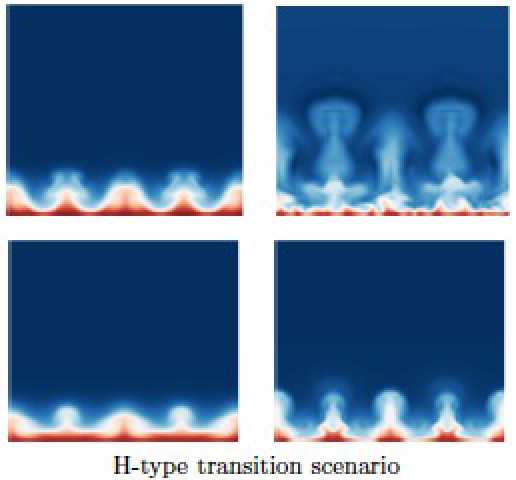 Over the past two decades, investigations into the control of the laminar to turbulent transition of the boundary layer have focused on controlling the T-S wave. The methods proposed can be classified as passive, active open-loop and active closed-loop control. Active open-loop control is achieved via powered actuation and closed-loop (feedback) control builds on any open-loop control strategy by informing actuation through flow field sensors. Passive flow control strategies do not need a power input and are achieved via physical changes to the geometry. Therefore passive control is generally considered easier and more cost-effective to implement in practice. Passive boundary layer flow control strategies are most commonly investigated by modifying the surface of a flat plate.
Over the past two decades, investigations into the control of the laminar to turbulent transition of the boundary layer have focused on controlling the T-S wave. The methods proposed can be classified as passive, active open-loop and active closed-loop control. Active open-loop control is achieved via powered actuation and closed-loop (feedback) control builds on any open-loop control strategy by informing actuation through flow field sensors. Passive flow control strategies do not need a power input and are achieved via physical changes to the geometry. Therefore passive control is generally considered easier and more cost-effective to implement in practice. Passive boundary layer flow control strategies are most commonly investigated by modifying the surface of a flat plate.
By addressing the effect of smooth steps on the boundary layer by linear analysis, the main findings of Hui’s investigation are:
1. Linear stability analysis shows the unstable T-S waves are stabilised when a smooth step is introduced in the boundary layer. For a single step, the reduction of the amplitudes of the T-S wave depends on its width and height scales. 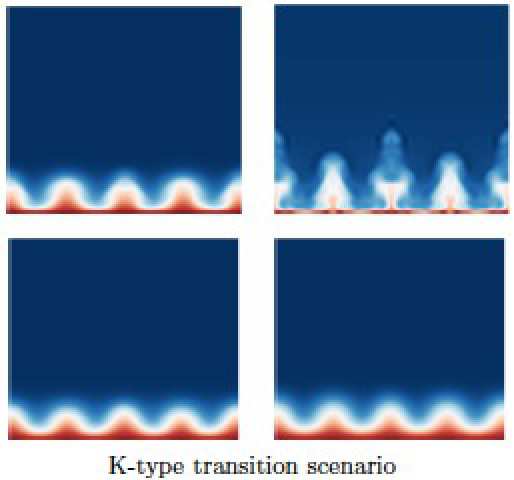 Higher steps result in a significant reduction of the amplitude of the T-S waves and larger step width enlarges the extension of the stabilisation region downstream of the smooth step.
Higher steps result in a significant reduction of the amplitude of the T-S waves and larger step width enlarges the extension of the stabilisation region downstream of the smooth step.
2. For two smooth steps, the overall stabilisation effect is significantly greater than that for a single smooth step. The maximum amplitude of the TS wave is reduced by more than 15% with respect to the flat plate.
3. The boundary layer stabilisation and transition delay for both K- and H-type transition scenarios, investigated by DNS, support the linear analyses. For the parameters used in our investigations, the DNS results show the smooth steps completely stabilise the K-type transition whereas the H-type transition is only delayed.
In view of these three findings, it is believed that smooth steps could be leveraged as a passive flow control strategy to delay natural transition. However, in future studies, it will be necessary to address the receptivity issue induced by the steps and adjust the flexible parameters of their geometry to reduce or eliminate the receptivity problem in typical free-stream conditions.
Publications
C. D. Cantwell, D. Moxey, A. Comerford, A. Bolis, G. Rocco, G. Mengaldo, D. de Grazia, S. Yakovlev, J.-E. Lombard, D. Ekelschot, B. Jordi, H. Xu, Y. Mohamied, C. Eskilsson, B. Nelson, P. Vos, C. Biotto, R. M. Kirby, S. J. Sherwin (2015). Nektar++: An open-source spectral/hp element framework,Computer Physics Communications 2015
Other outputs
Transition Delay Industry Application
Gianmarco Mengaldo: High Order Spectral h/p Methods for Compressible Flows
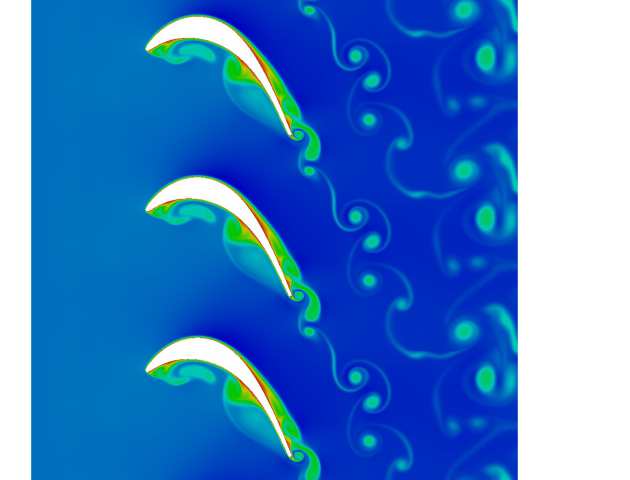 Gianmarco is working on the development of an effective DNS tool to deal with compressible flow problems. The main interest from the LFC-UK point of view is to provide accurate DNS data for 2D-2.5D geometries (i.e. aerofoils and swept wings) given by Airbus and to compare the DNS data with experimental data. He is also interested in comparing the DNS data with some theoretical results obtained within the LFC-UK centre.
Gianmarco is working on the development of an effective DNS tool to deal with compressible flow problems. The main interest from the LFC-UK point of view is to provide accurate DNS data for 2D-2.5D geometries (i.e. aerofoils and swept wings) given by Airbus and to compare the DNS data with experimental data. He is also interested in comparing the DNS data with some theoretical results obtained within the LFC-UK centre.
blah
More detail and links to research outputs
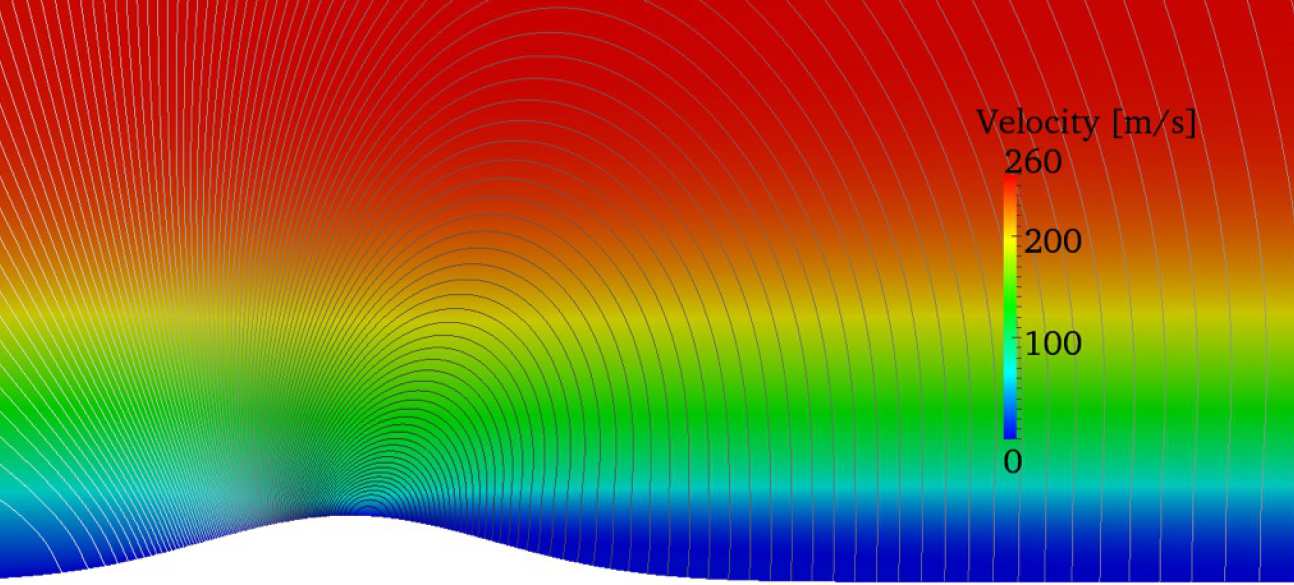 In order to provide an effective DNS tool, Gianmarco has developed and analysed two high-order numerical approaches, namely the discontinuous Galerkin (DG) method and the flux reconstruction (FR) approach. He has found some new underlying connections between these schemes, contributing to revealing that many of the concepts from the existing literature regarding the DG scheme can be equivalently applied to the FR approach.
In order to provide an effective DNS tool, Gianmarco has developed and analysed two high-order numerical approaches, namely the discontinuous Galerkin (DG) method and the flux reconstruction (FR) approach. He has found some new underlying connections between these schemes, contributing to revealing that many of the concepts from the existing literature regarding the DG scheme can be equivalently applied to the FR approach.
He also contributed to development and analysis of novel dealiasing techniques applied to a broad range of spectral/hp element methods, including the traditional continuous Galerkin approach.
He has finally used the DG and the FR methods developed in the spectral/hp element library Nektar++ to perform some DNS simulations in order to investigate the flow past a hump. The specific aim of this study was to compare the DNS data with theoretical (mainly triple-deck theory) and experimental results.
Publications
De Grazia D., Mengaldo G., Moxey D., Vincent P. E. and Sherwin S. J. (2014), Connections between the discontinuous Galerkin method and high-order flux reconstruction schemes, Int. J. Numer. Meth. Fluids, 75, pages 840–859. DOI: 10.1002/fld.3915
Mengaldo G., De Grazia D., et al. (2014), A Guide to the Implementation of Boundary Conditions in Compact High-Order Methods for Compressible Aerodynamics, AIAA, 2014. DOI: 10.2514/6.2014-2923
C. D. Cantwell, D. Moxey, A. Comerford, A. Bolis, G. Rocco, G. Mengaldo, D. de Grazia, S. Yakovlev, J.-E. Lombard, D. Ekelschot, B. Jordi, H. Xu, Y. Mohamied, C. Eskilsson, B. Nelson, P. Vos, C. Biotto, R. M. Kirby, S. J. Sherwin (2015). Nektar++: An open-source spectral/hp element framework,Computer Physics Communications 2015
Other outputs
High Order Industry Application
Daniele De Grazia: High Order Spectral h/p Methods for Compressible Flows
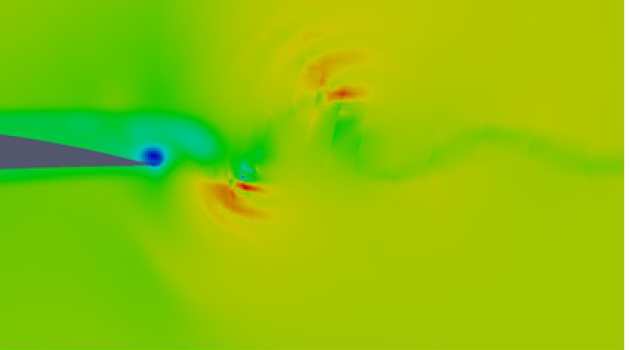 The goal of Daniele's research is to provide to the LFC group with an efficient numerical tool to simulate flow in boundary layers over swept wings to be used for a better understanding of the transition scenario. Specifically the tool has to be used to perform DNS of compressible Euler and Navier-Stokes equations which can take into account the main passive devices and approaches currently employed for transition location control.
The goal of Daniele's research is to provide to the LFC group with an efficient numerical tool to simulate flow in boundary layers over swept wings to be used for a better understanding of the transition scenario. Specifically the tool has to be used to perform DNS of compressible Euler and Navier-Stokes equations which can take into account the main passive devices and approaches currently employed for transition location control.
blah
More detail and links to research outputs
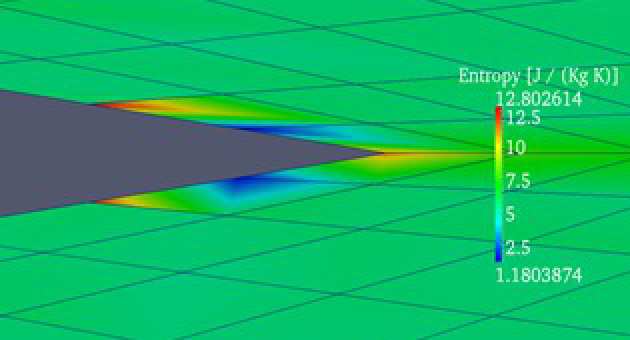 In order to achieve these objectives a spectral h/p element library called Nektar++, written in C++ and developed by the Sherwin group at Imperial College London and by the Kirby group at Utah University in the US will be used. The main aim from this point of view is to introduce a high-order numerical approach, the Flux Reconstruction (FR) approach, into the library in order to treat compressible Euler and Navier-Stokes equations on quadrilateral and hexaedral unstructured grids more efficiently.
In order to achieve these objectives a spectral h/p element library called Nektar++, written in C++ and developed by the Sherwin group at Imperial College London and by the Kirby group at Utah University in the US will be used. The main aim from this point of view is to introduce a high-order numerical approach, the Flux Reconstruction (FR) approach, into the library in order to treat compressible Euler and Navier-Stokes equations on quadrilateral and hexaedral unstructured grids more efficiently.
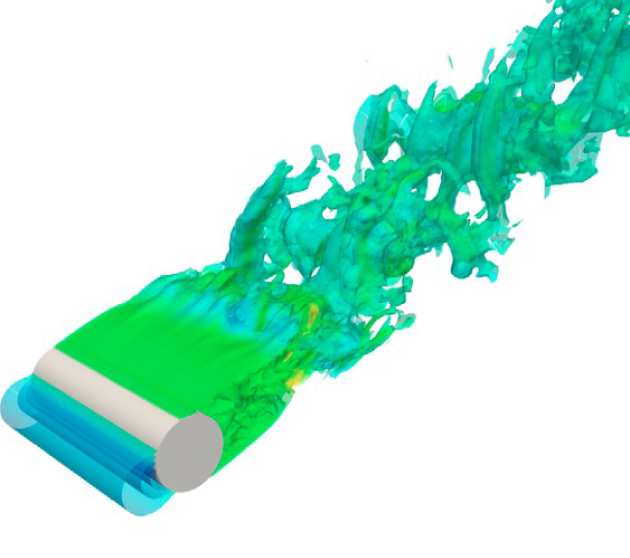
Daniele developed in the library some dealiasing approaches (such as Q-point Gauss quadrature and a super-collocation tecnique) for the FR and a Discontinous Galerkin (DG) advection and diffusion operators. These approaches are particularly useful when dealing with non-linear problems like those in which we are interested. The next step will be the development of the 3D advection and diffusion operators (which at the moment use a DG method) using the FR approach.
Publications
De Grazia D., Mengaldo G., Moxey D., Vincent P. E. and Sherwin S. J. (2014), Connections between the discontinuous Galerkin method and high-order flux reconstruction schemes, Int. J. Numer. Meth. Fluids, 75, pages 840–859. DOI: 10.1002/fld.3915
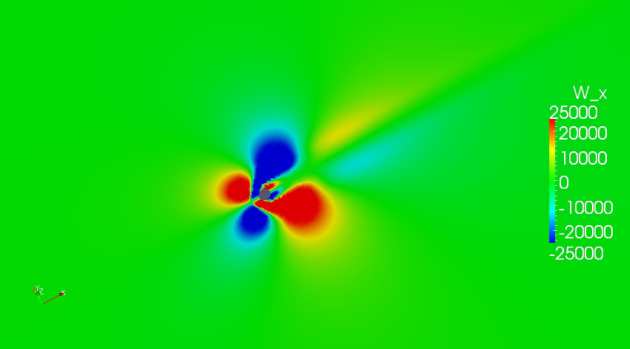 Mengaldo G., De Grazia D., et al. (2014), A Guide to the Implementation of Boundary Conditions in Compact High-Order Methods for Compressible Aerodynamics, AIAA, 2014. DOI: 10.2514/6.2014-2923
Mengaldo G., De Grazia D., et al. (2014), A Guide to the Implementation of Boundary Conditions in Compact High-Order Methods for Compressible Aerodynamics, AIAA, 2014. DOI: 10.2514/6.2014-2923
C. D. Cantwell, D. Moxey, A. Comerford, A. Bolis, G. Rocco, G. Mengaldo, D. de Grazia, S. Yakovlev, J.-E. Lombard, D. Ekelschot, B. Jordi, H. Xu , Y. Mohamied, C. Eskilsson , B. Nelson, P. Vos, C. Biotto, R. M. Kirby, S. J. Sherwin (2015). Nektar++: An open-source spectral/hp element framework,Computer Physics Communications 2015
Mengaldo G, De Grazia D, Moxey D, Vincent P. E. and Sherwin S. J. (2015), Dealiasing techniques for high-order spectral element methods on regular and irregular grids, Journal of Computational Physics, available online 7 July 2015. doi:10.1016/j.jcp.2015.06.032
Other outputs
De Grazia Industry Application


